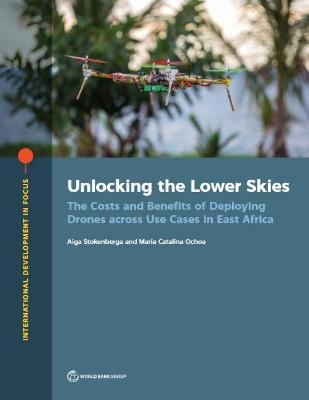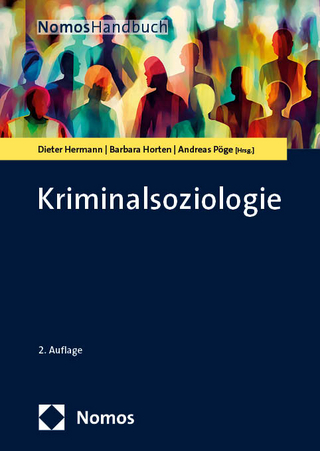
Unlocking the lower skies
the costs and benefits of deploying drones across use cases in East Africa
Seiten
2021
World Bank Publications (Verlag)
978-1-4648-1696-3 (ISBN)
World Bank Publications (Verlag)
978-1-4648-1696-3 (ISBN)
- Titel z.Zt. nicht lieferbar
- Versandkostenfrei innerhalb Deutschlands
- Auch auf Rechnung
- Verfügbarkeit in der Filiale vor Ort prüfen
- Artikel merken
Explores the economic and broader societal rationale for introducing drone technologies as a complement to the current transport and logistics systems in the East Africa context. Use cases include medical goods and food aid deliveries; land mapping and risk assessment; agriculture; and transport and energy infrastructure inspection.
This book explores the economic and broader societal rationale for using unmanned aerial vehicle (UAV) or “drone” technologies as a complement to the current transport and logistics systems in several use cases in East Africa. The specific use cases examined include medical goods deliveries, food aid delivery, land mapping and risk assessment, agriculture, and transport and energy infrastructure inspection. Across these applications, the case for using UAVs is examined within the context of logistics objectivestotal operating costs, speed, availability, and flexibilityas well as human, or societal, objectives. In the public health use case, as more low- and middle-income countries explore opportunities to improve efficiency and performance in their health supply chains and diagnostics networks, they face myriad choices about how best to use UAVs to improve product availability and public health outcomes and to reach the last mile. The high-level findings from this analysis are that, if examining commodity categories individually and looking exclusively at costs, delivery with UAVs in general is still more expensive for most categories. Although the cost is still higher, the most cost-effective use case examples include the transport of laboratory samples to selected destinations and delivery of life-saving items and blood. However, “layering” several use cases can provide efficiencies and cost savings by allocating fixed costs across a greater number of flights and maximizing capacity and time utilization. From the perspective of public decision-makers, the cost effectiveness of UAVs cannot be analyzed without looking at the public health benefits, which may be substantial. Drone application in the other use cases examined in this book, such as mapping, risk assessment, and agriculture, is relatively more common than cargo drone operations, and the existing pilot initiatives in East Africa have delivered impressive results for speed and quality (precision). Food aid delivery by drones is still mostly at a planning, rather than implementation, stage. Drone applications are rapidly evolving, and several use cases could gain impact and scale over the coming years
This book explores the economic and broader societal rationale for using unmanned aerial vehicle (UAV) or “drone” technologies as a complement to the current transport and logistics systems in several use cases in East Africa. The specific use cases examined include medical goods deliveries, food aid delivery, land mapping and risk assessment, agriculture, and transport and energy infrastructure inspection. Across these applications, the case for using UAVs is examined within the context of logistics objectivestotal operating costs, speed, availability, and flexibilityas well as human, or societal, objectives. In the public health use case, as more low- and middle-income countries explore opportunities to improve efficiency and performance in their health supply chains and diagnostics networks, they face myriad choices about how best to use UAVs to improve product availability and public health outcomes and to reach the last mile. The high-level findings from this analysis are that, if examining commodity categories individually and looking exclusively at costs, delivery with UAVs in general is still more expensive for most categories. Although the cost is still higher, the most cost-effective use case examples include the transport of laboratory samples to selected destinations and delivery of life-saving items and blood. However, “layering” several use cases can provide efficiencies and cost savings by allocating fixed costs across a greater number of flights and maximizing capacity and time utilization. From the perspective of public decision-makers, the cost effectiveness of UAVs cannot be analyzed without looking at the public health benefits, which may be substantial. Drone application in the other use cases examined in this book, such as mapping, risk assessment, and agriculture, is relatively more common than cargo drone operations, and the existing pilot initiatives in East Africa have delivered impressive results for speed and quality (precision). Food aid delivery by drones is still mostly at a planning, rather than implementation, stage. Drone applications are rapidly evolving, and several use cases could gain impact and scale over the coming years
| Erscheinungsdatum | 06.08.2021 |
|---|---|
| Reihe/Serie | International development in focus |
| Zusatzinfo | col. ill., col. figs, tables |
| Verlagsort | Washington |
| Sprache | englisch |
| Themenwelt | Sozialwissenschaften ► Soziologie ► Spezielle Soziologien |
| Technik ► Fahrzeugbau / Schiffbau | |
| Wirtschaft ► Volkswirtschaftslehre ► Mikroökonomie | |
| ISBN-10 | 1-4648-1696-4 / 1464816964 |
| ISBN-13 | 978-1-4648-1696-3 / 9781464816963 |
| Zustand | Neuware |
| Haben Sie eine Frage zum Produkt? |
Mehr entdecken
aus dem Bereich
aus dem Bereich
eine Einführung
Buch | Softcover (2024)
De Gruyter Oldenbourg (Verlag)
29,95 €


